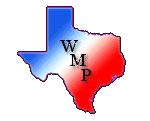IN THE UNITED STATES DISTRICT COURT
FOR THE NORTHERN DISTRICT OF TEXAS
AMARILLO DIVISION
___________________________________
COLONY NATIONAL INSURANCE
COMPANY,
Plaintiff,
v.
SPECIALTY TRAILER LEASING, INC.,
Defendant.
NO. 2:09-CV-005-J
MEMORANDUM OPINION AND ORDER
Before the Court is Plaintiff Colony National Insurance Company’s (“Colony”) Motion
for Summary Judgment, filed on April 8, 2009. This motion is GRANTED.
BACKGROUND
Colony brought this is action for declaratory judgment to determine whether Colony has
a duty to defend and indemnify Defendant Specialty Trailer Leasing, Inc. (“Specialty”) under a
policy of liability insurance issued by Colony to Specialty against the claims and potential claims
raised in three separate lawsuits. Specialty is in the business of leasing various types of trailers
that are used to transport industrial gases—including liquid oxygen, nitrogen, carbon dioxide,
helium and argon. The underlying lawsuits arise out of an accident aboard a ship known as the
Madeleine. It is alleged that on May 20, 2008, three dock workers, Hayman Sooknanan, James
Cason, and Robert Dutertre, Jr. (the “Underlying Plaintiffs”) were working aboard the
Madeleine. On orders of the port captain, Sooknanan went into the cargo hold to investigate a
“tanktainer” owned by Specialty that was stored there. When Sooknanan did not quickly emerge
from the hold, Cason went in to investigate. Dutertre followed Cason into the cargo hold. It is
FILED
JUNE 2, 2009
KAREN S. MITCHELL
CLERK, U.S. DISTRICT COURT
Case 2:09-cv-00005-J Document 18 Filed 06/02/2009 Page 1 of 6
alleged that argon gas was leaking from the tanktainer, and when Sooknanan, Cason, and
Dutertre each went into the cargo hold, they were fatally asphyxiated as the argon gas displaced
the air in the ship’s hold.
At issue is whether the general liability insurance policy (the “Policy”) issued by Colony
to Specialty provides coverage for these claims. The Policy includes an exclusion for bodily
injuries resulting from the “actual, alleged or threatened discharge, dispersal, seepage, migration,
release or escape of ‘hazardous materials’ at any time.” According to the Policy, “hazardous
materials” are “pollutants, lead, asbestos, silica and materials containing them.” “Pollutants” are
defined to mean “any solid, liquid, gaseous or thermal irritant or contaminant, including smoke,
vapor, soot, fumes, acids, alkalis, chemicals and waste.” The terms “irritant” and “contaminant”
are not defined in the Policy.
Colony moves for summary judgment, arguing that the allegations made by the
Underlying Plaintiffs against Specialty are clearly for damages that would not have occurred
without the involvement of hazardous materials, which includes “pollutants”, as that term is
defined in the Policy. Specialty disputes this, claiming that argon gas, being a naturallyoccurring
element present in the air we breathe, is not a pollutant.
SUMMARY JUDGMENT STANDARD
This Court may grant summary judgment on a claim if the record shows that there is no
genuine issue of material fact and that “the moving party is entitled to judgment as a matter of
law.” FED. R. CIV. P. 56(c). A party who moves for summary judgment has the burden of
identifying the parts of the pleadings and discovery on file that, together with any affidavits,
show the absence of a genuine issue of material fact. See Celotex Corp. v. Catrett, 477 U.S. 317,
325 (1986). If the movant carries this burden, then the burden shifts to the nonmovant to show
Case 2:09-cv-00005-J Document 18 Filed 06/02/2009 Page 2 of 6
that the Court should not grant summary judgment. Id. at 324-25. The nonmovant must set forth
specific facts that show a genuine issue for trial. Anderson v. Liberty Lobby, Inc., 477 U.S. 242,
256 (1986). The nonmovant cannot rely on conclusory allegations, improbable inferences, and
unsupported speculation. Krim v. BancTexas Group, Inc., 989 F.2d 1435, 1449 (5th Cir. 1993).
The Court must review the facts and draw all inferences most favorable to the nonmovant. Reid
v. State Farm Mut. Auto Ins. Co., 784 F.2d 577, 578 (5th Cir. 1986).
Summary judgment is also appropriate if “adequate time for discovery” has passed and a
party “fails to make a showing sufficient to establish the existence of an element essential to the
party’s case, and on which that party will bear the burden of proof at trial.” Celotex Corp., 477
U.S. at 322. The party moving for summary judgment must “demonstrate the absence of a
genuine issue of material fact, ‘but need not negate the elements of the nonmovant’s case.’”
Little v. Liquid Corp., 37 F.3d 1069, 1075 (5th Cir. 1994), quoting Celotex Corp., 477 U.S. at
323. The nonmovant must then show by affidavits, depositions, answers to interrogatories,
admissions on file, or other evidence that there is a genuine issue of material fact for trial.
Wallace v. Texas Tech Univ., 80 F.3d 1042, 1047 (5th Cir. 1996).
DISCUSSION
When a court interprets an exclusionary clause, it “must adopt the construction of an
exclusionary clause urged by the insured as long as that construction is not unreasonable, even if
the construction urged by the insurer appears to be more reasonable or a more accurate reflection
of the parties’ intent.” Evanston Ins. Co. v. ATOFINA Petrochemicals, Inc., 256 S.W.3d 660, 668
(Tex. 2008). “Exclusions are narrowly construed, and all reasonable inferences must be drawn
in the insured’s favor.” Gore Design Completions, Ltd. v. Hartford Fire Ins. Co., 538 F.3d 365,
370 (5th Cir.2008)
Case 2:09-cv-00005-J Document 18 Filed 06/02/2009 Page 3 of 6
Texas courts construe insurance contracts under the same rules applicable to contracts
generally. Nautilus Ins. Co. v. Country Oaks Apts., Ltd., 2009 WL 1067587 at *2 (5th Cir. April
22, 2009), citing Nat’l Union Fire Ins. Co. v. CBI Indus., Inc., 907 S.W.2d 517, 520 (Tex. 1995).
This Court’s “primary goal, therefore, is to give effect to the written expression of the parties’
intent.” Nautilus, 2009 WL 1067587 at *2 citing Balandran v. Safeco Ins. Co. of Am., 972
S.W.2d 738, 741 (Tex. 1998). “[T]he parties’ intent is governed by what they said, not by what
they intended to say but did not.” Nautilus, 2009 WL 1067587 at *2.
Where the complaint does not state facts sufficient to clearly bring the case within or
without the coverage, the general rule is that the insurer is obligated to defend if there is,
potentially, a case under the complaint within the coverage of the Policy. Merchants Fast Motor
Lines, 939 S.W.2d at 141. Stated differently, in case of doubt as to whether or not the allegations
of a complaint against the insured state a cause of action within the coverage of a liability policy
sufficient to compel the insurer to defend the action, such doubt will be resolved in insured’s
favor. Id.
THE POLICY
A strikingly similar case was recently decided by the Fifth Circuit Court of Appeals. In
Nautilus Ins. Co. v. Country Oaks Apts., Ltd., the Fifth Circuit analyzed a comparable
exclusionary policy. Nautilus, 2009 WL 1067587 at *1. There, an apartment complex
(“Country Oaks”) purchased a general liability policy from Nautilus Insurance Company
(“Nautilus”). Some time during the policy period, apartment workers accidentally blocked the
vent to the furnace in several apartments. The underlying plaintiff in that case was a resident of
one of these apartments who was pregnant at the time. Her child was born with a number of
Case 2:09-cv-00005-J Document 18 Filed 06/02/2009 Page 4 of 6
difficulties which were attributed by to the in utero exposure to the carbon monoxide which
accumulated in her apartment due to the blocked furnace vent.
Country Oaks’ policy contained a pollution exclusion nearly identical to the exclusion in
the present case. The question before the Fifth Circuit, much like the question before this Court,
is whether a naturally appearing inert gas is a pollutant for the purposes of an insurance policy
exclusion. There, the underlying plaintiff’s petition alleged that she encountered a strong enough
concentration of carbon monoxide to cause severe and permanent injuries to her child. Id. at *4.
The Court decided the allegations involved a “pollutant” as defined by the policy. Id. The
Circuit Court “explicitly rejected the argument that a substance must generally or usually act as
an irritant or contaminant to constitute a ‘pollutant’ under the pollution exclusion.” Id. at *3.
In the present case, the Underlying Plaintiffs allege a concentration of argon case
sufficient to cause death. While argon gas appears naturally in the atmosphere without causing
injury, the concentration allegedly present in the Madeleine was obviously much higher.1 In
both the present case and in Nautilus, the key question is whether high concentrations of inert,
naturally occurring gasses constitute a “pollutant” with regard to an insurance coverage policy.
Nautilus decided this question in the affirmative. In light of the Nautilus decision, this Court
concludes dangerously elevated concentrations of argon are a pollutant as a matter of law in the
context of an insurance policy exclusion.
Accordingly, the hazardous materials exclusion in the Specialty insurance policy
excludes coverage for all damages related to the release of pollutants. Judgment is granted for
the Plaintiff Colony National Insurance Company. Colony has no duty to defend or indemnify
1 According to NASA, argon gas is the third most common gas in dry atmosphere, constituting slightly less than 1%
of air by volume.
Case 2:09-cv-00005-J Document 18 Filed 06/02/2009 Page 5 of 6
Specialty against the claims or potential claims made by the Underlying Plaintiffs arising out of
the incident occurring on the Madeleine on or about May 20, 2008.
IT IS SO ORDERED.
Signed this 2nd day of June, 2009.
/s/ Mary Lou Robinson
MARY LOU ROBINSON
UNITED STATES DISTRICT JUDGE
Case 2:09-cv-00005-J Document 18 Filed 06/02/2009 Page 6 of 6
Williams, McClure & Parmelee is dedicated to high quality legal representation of businesses and insurance companies in a variety of matters. We are experienced Texas civil litigation attorneys based in Fort Worth who know Texas courts and Texas law. For more information, please contact the law firm at 817-335-8800. The firm’s new office location is 5601 Bridge Street, Suite 300, Fort Worth, Texas 76112.

![texas[2]](https://texasdefensecounsel.com/wp-content/uploads/2014/02/texas2.gif)
